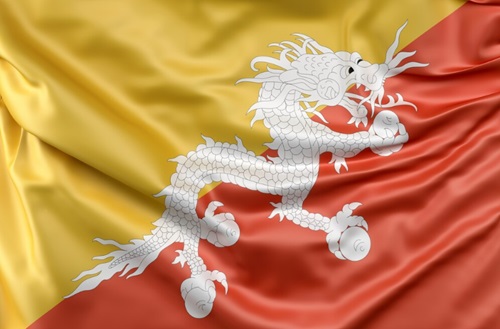
Dreaming of an adventure to the mystical kingdom of Bhutan from Malaysia? We are here to help you go through the journey seamlessly. Bhutan with its rich cultural heritage, and commitment to sustainable tourism, promises an unforgettable experience. If you're drawn to its serene monasteries, vibrant festivals, or the allure of the Himalayas, a travel to Bhutan from Malaysia requires careful planning. From visa requirements and travel costs to itinerary tips and cultural insights, this guide covers everything you need to know for a memorable trip. So let's make your Bhutanese adventure a reality!
Travel To Bhutan From Malaysia With These Steps
There are multiple options for residents of Malaysia to travel to Bhutan by first travelling to the various port of call of Drukair, Royal Bhutan Airlines. Follow this step-by-step guide to make your trip from Malaysia to Bhutan seamless and hassle-free.
Step 1: Obtain Your Visa
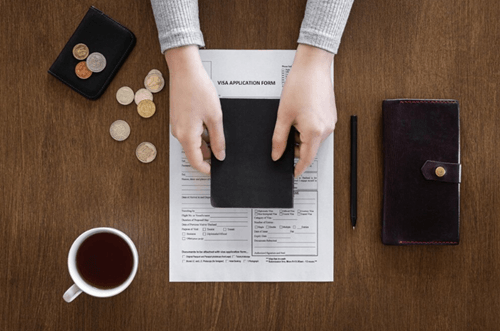
To travel from Bhutan to Malaysia, you must obtain a visa arranged through a licensed Bhutanese tour operator or an international partner. Here’s how:
Contact a Tour Operator
-
Choose a Licensed Operator: Select a licensed Bhutanese tour operator or an international partner to facilitate your visa application. These operators are authorized by the Bhutanese government to handle all necessary arrangements for international visitors.
-
Research and Selection: Take time to research various tour operators to find one that meets your preferences and budget. Look for operators with good reviews, comprehensive tour packages, and excellent customer service.
Submit Required Documents
-
Scanned Copy of Passport: Provide a clear, scanned copy of your passport. Ensure that your passport is valid for at least six months from your intended entry date into Bhutan. This is a mandatory requirement for visa processing.
-
Passport-Sized Photograph: Submit a recent passport-sized photograph.
-
Sustainable Development Fee (SDF): USD100 per night per adult and USD50 for children aged 6 to below 11 years old. For children aged 5 and below, the SDF is waived. Check out the Sustainable Development Fee for more information.
Visa Fee
-
Cost: The visa fee for Bhutan is USD 40. This fee is usually included in the overall cost of your tour package.
-
Payment Process: Your tour operator will handle the payment of the visa fee on your behalf. Once you confirm your trip and make the required payments for your tour package, the operator will process your visa application.
-
Processing Time: The visa processing time generally takes about 7 working days. However, it’s advisable to complete your visa arrangements well in advance of your travel dates to avoid any last-minute issues.
Visa Issuance
-
Approval Letter: Once your visa is approved, your tour operator will send you a visa approval letter. This letter serves as proof of your visa and will be required upon arrival in Bhutan.
-
Visa on Arrival: Upon arrival at Paro International Airport, present your visa approval letter along with your passport. Your actual visa will be stamped into your passport at this point.
Tour Confirmation
-
Itinerary Finalization: Work with your tour operator to finalize your itinerary, ensuring that all your interests and preferences are included. This might involve selecting specific cultural sites, adventure activities, or festival dates.
-
Payment and Documentation: Complete any remaining payments and submit any additional documentation required by your tour operator. They will then handle the rest, including arranging accommodations, guides, and transportation.
Step 2: Book Your Flights
Bhutan’s sole international airport is in Paro. Since there are no direct flights from Malaysia to Bhutan, you’ll need to transit through another country. Here’s how to go about it:
Choose a Transit City: Since there are no direct flights from Malaysia to Bhutan, you will need to transit through a city that offers connecting flights to Paro. Common transit cities include: Bangkok, Thailand: Suvarnabhumi Airport (BKK) is a major hub with frequent flights to Paro.
-
Singapore: Changi Airport (SIN) offers connections to Paro, providing a convenient transit point for travelers from Malaysia.
-
Kathmandu, Nepal: Tribhuvan International Airport (KTM) is another popular transit hub for flights to Paro.
-
New Delhi, India: Indira Gandhi International Airport (DEL) has regular flights to Paro and is a convenient transit option.
-
Kolkata, India: Netaji Subhas Chandra Bose International Airport (CCU) also offers flights to Paro.
Once you have chosen your transit city, proceed with booking your flights. Here’s how to do it
-
International Flight to Transit City: First, book your flight from Malaysia to the chosen transit city. Major airlines such as Malaysia Airlines, Singapore Airlines, and Thai Airways offer frequent flights to these transit hubs.
-
Connecting Flight to Paro: After securing your international flight, book your connecting flight to Paro. Druk Air (Royal Bhutan Airlines) and Bhutan Airlines are the two airlines that operate flights to Paro. These airlines offer a limited number of flights, so it’s advisable to book well in advance to secure your preferred dates.
-
Coordinating Flight Times: Ensure that your flight schedules are well-coordinated to allow sufficient time for transit. Consider factors such as layover duration, immigration procedures, and potential delays. A layover of at least 3-4 hours is recommended to ensure a smooth transfer between flights.
-
Round-Trip Booking: For convenience, book your return flights at the same time to ensure availability and often offer better rates compared to one-way tickets.
-
Check Flight Availability: Due to the limited number of flights to Bhutan, especially during peak tourist seasons (March, April, May, September, October, and November), it’s crucial to check flight availability and book as early as possible.
-
Travel Insurance: Consider purchasing travel insurance that covers flight cancellations, delays, and other unforeseen circumstances. Insurance provides peace of mind and financial protection, especially when dealing with international flights and multiple connections.
If you are traveling with Druk Asia, our Travel Specialists can book your Drukair flight on your behalf, as we are the official representative of Bhutan's national carrier.
Step 3: Understand Travel Costs
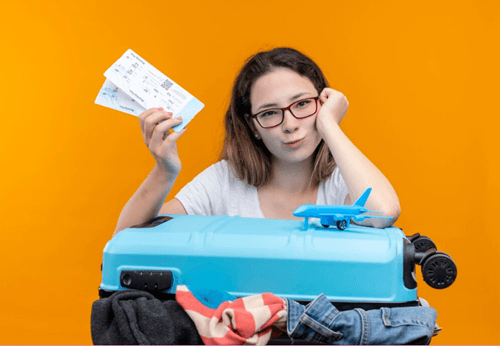
As part of its high-value, low-volume tourism policy, Bhutan imposes a daily Sustainable Development Fee (SDF) on all incoming tourists. Bhutan's Sustainable Development Fee (SDF) is a daily levy imposed on international tourists visiting the country.
The SDF is intended to fund various sustainable development projects in Bhutan, including environmental conservation, cultural preservation, and infrastructure development. The revenue generated from this fee supports initiatives that help maintain Bhutan’s natural landscapes, protect its rich cultural heritage, and improve the quality of life for its citizens.
This fee is designed to support sustainable tourism practices, preserve the country’s unique culture and environment, and ensure that tourism remains a positive and beneficial force for the local community and the nation as a whole.
The current Sustainable Development Fee (SDF) for all tourists is at USD100 per adult per night.
USD50 for children aged 6 to below 11 years old. For children aged 5 and below, the SDF is waived.
Do note that the Sustainable Development Fee (SDF) does not include accommodation, meals, transport and guides.
The total cost of travel to Bhutan largely depends on the following factors:
- The type of accommodation that you choose.
- The places that you visit in Bhutan.
- The no. of days you require a tour guide.
- The no. of days you require a driver.
Do provide your travel details (no. of pax and tentative travel dates) at https://www.drukasia.com/contact/ and our friendly travel consultants will assist you with the costing.
Step 4: Customize Your Itinerary
Personalize your travel experience in Bhutan by planning your itinerary with your tour operator. Here are some activities and spots for a start:
-
Cultural Experiences: Visit iconic sites such as the Tiger’s Nest Monastery, Punakha Dzong, and the National Museum of Bhutan.
-
Festivals: Time your visit to coincide with Bhutanese festivals like the Paro Tshechu or Thimphu Tshechu.
-
Adventure Activities: Enjoy trekking in Bhutan, river rafting, and other adventure activities.
-
Spiritual Retreats: Explore meditation centers and monasteries.
Step 5: Prepare For Health And Safety
Ensuring your health and safety during your trip to Bhutan is key to a worry-free and enjoyable experience. Here are some key considerations to keep in mind:
-
Vaccinations: Before traveling to Bhutan, consult your doctor about necessary vaccinations. Common recommendations include vaccinations for Hepatitis A and B, Typhoid, and routine vaccines such as MMR (measles, mumps, rubella) and DTP (diphtheria, tetanus, pertussis).
-
Altitude Sickness: Although uncommon, Bhutan’s high altitudes can pose a risk of altitude sickness, especially if you are not accustomed to such elevations. Symptoms may include headaches, nausea, dizziness, and shortness of breath. To mitigate these effects:
-
Acclimatize Gradually: Allow your body time to adjust by spending the first few days at lower altitudes before ascending to higher elevations.
-
Stay Hydrated: Drink plenty of water to help your body cope with the altitude.
-
Medication: Consult your doctor about medications like acetazolamide (Diamox), which can help prevent altitude sickness.
-
Medical Facilities: While basic healthcare services are available in major towns such as Thimphu and Paro, facilities in more remote areas can be limited.
For serious medical conditions, evacuation to a neighboring country like India may be necessary. To ensure you have access to adequate care:
-
Travel Insurance: Purchase travel insurance that covers medical emergencies, evacuation, and trip cancellations for peace of mind and financial protection in case of unforeseen health issues.
-
First Aid Kit: Carry a personal first aid kit with essentials like band-aids, antiseptic wipes, pain relievers, and any prescription medications you may need that can be particularly useful during treks or when visiting remote areas.
Step 6: Respect Cultural Etiquette
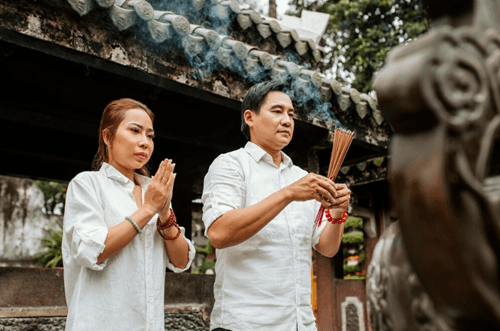
The Bhutanese people are known for their hospitality and deep cultural heritage, and by observing their cultural norms, you can show appreciation and gain deeper insights into their way of life. Here are some key points to keep in mind:
-
Dress Code: Modest attire is highly valued in Bhutan, particularly when visiting religious and cultural sites. When visiting monasteries, dzongs (fortresses), and temples, wear clothing that covers your arms and legs.
Long sleeves and long pants are appropriate. Avoid wearing shorts, tank tops, or revealing clothing.
-
Respect for Monks: Monks are highly revered in Bhutanese society. Show respect by avoiding physical contact, and refrain from disturbing them during prayers or rituals. If you wish to speak with a monk, wait for an appropriate moment and approach them politely.
Avoid pointing your feet towards people or religious objects, as this is considered disrespectful. When sitting, tuck your feet underneath you or to the side. Additionally, avoid touching anyone’s head, as the head is considered the most sacred part of the body.
-
Religious Sites: Photography may be restricted in certain religious sites and inside temples. Look for signs or ask your guide for clarification. If photography is allowed, ensure you do not use flash, as it can be disruptive to both people and artifacts.
-
Greetings: A traditional Bhutanese greeting involves a slight bow with hands pressed together in a prayer position (similar to a Namaste). A small gesture shows respect and is often used when greeting elders or entering a home or temple.
-
Gift Giving: If you are invited to a Bhutanese home, bringing a small gift, such as fruits or sweets, is a kind gesture. Gifts should be given and received with both hands as a sign of respect.
-
Littering: Avoid littering and always dispose of trash properly. Bhutan’s pristine environment is a source of national pride, and maintaining its cleanliness is a collective effort.
Additional Information On Transit City Flights
Traveling To Bhutan Via Kathmandu In Nepal.
There are many airlines that provide air services between Kuala Lumpur (KUL) and Kathmandu (KTM) on a daily basis. These airlines include Malaysian Airlines (MAS), Malindo, Air Asia X, Himalayan Airlines and Nepal Airlines which together provides up to 4 flights a day between KUL and KTM.
Malaysian travellers typically will have to lay over one night in Kathmandu and catch a Drukair flight from KTM to Paro (PBH), Bhutan.
Traveling To Bhutan Via Bangkok In Thailand.
There are more than 20 flights a day between KUL and Bangkok (BKK).
Do note that Drukair departs BKK from Suvarnabhumi Airport twice daily and travellers from Malaysia should be able to catch an early morning flight to Suvarnabhumi and connect with Drukair's afternoon flight from (May till Feb)
Traveling To Bhutan Via Singapore On Drukair
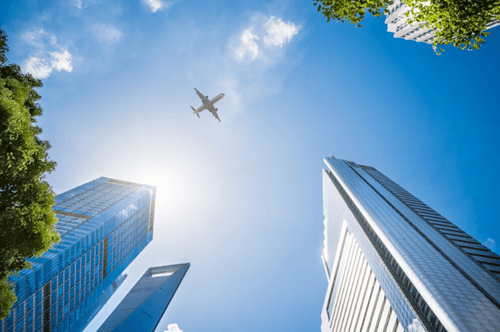
Singapore as a port is also an option for many Malaysians especially if they are staying in the southern state of Johor and Melaka. Traveling by road to Singapore, travellers can catch the twice weekly direct flight from Singapore to Paro
The Singapore Paro route was introduced by Drukair in September 2012. The route would include a stop over in Guwahati, Assam, India. You will not require an Indian transit Visa as passengers who are enroute to Paro do not have to disembark from the plane during the stopover.
Here are more details on how to travel to Bhutan :-
Travelling to Bhutan from Singapore
Travelling to Bhutan from Bangkok, Thailand
Travelling to Bhutan from Kathmandu, Nepal
Travelling to Bhutan from Australia
Conclusion About The Travel To Bhutan From Malaysia
The travel to Bhutan from Malaysia is an adventure that promises to be both enriching and memorable. With the help of a travel agency, each step is designed to ensure a seamless and enjoyable experience.
Moreover, Bhutan’s commitment to sustainable tourism, breathtaking landscapes, and rich cultural heritage make it a unique destination well worth the journey.
Ready to go on your Bhutanese adventure? Druk Asia is here to make your dream trip a reality. As a trusted and licensed Bhutanese tour operator, Druk Asia offers comprehensive tour packages tailored to your interests and preferences.
Let Druk Asia guide you through the Land of the Thunder Dragon with expertise and care.
Frequently Asked Questions About The Travel To Bhutan From Malaysia
Do Malaysian Nationals Need A Visa To Visit Bhutan?
Yes, Malaysia passport holders require a visa to travel to Bhutan. A physical copy of the Visa must be produced during check-in for your Bhutan bound flight. Your Bhutan visa is granted for one time entry for the duration of the travel only.
Tourist visas can be obtained from authorized travel agencies like Druk Asia - Bhutan Travel Specialist.
Please visit Bhutan Tourist Visa Application Procedures
What Is the Best Time To Visit Bhutan From Malaysia?
The best time to visit Bhutan is during the spring (March to May) and autumn (September to November) seasons. These periods offer pleasant weather, clear skies, and vibrant festivals.
Spring is ideal for seeing blooming flowers and lush landscapes, while autumn provides stunning views of the Himalayan mountains.
How Long Should I Plan To Stay In Bhutan?
The duration of your stay depends on your interests and the activities you wish to engage in. A typical trip ranges from 5 to 10 days, allowing you to explore major cultural sites, participate in festivals, and enjoy trekking or other adventure activities. Longer stays can be arranged for more in-depth exploration.
What Currency Is Used In Bhutan and How Can I Exchange Money?
The official currency of Bhutan is the Bhutanese Ngultrum (BTN). Indian Rupees (INR) are also widely accepted. You can exchange money at the airport, banks, and authorized money changers. Major hotels and some shops accept credit cards, but it’s advisable to carry cash, especially when traveling to remote areas.
Do note that Bhutan only accepts 10 major foreign currencies: 10 major currencies: U.S. Dollar, Pound Sterling, Euro, Japanese Yen, Swiss Franc, Hong Kong Dollar, Canadian Dollar, Danish Kroner, Australian Dollar and Singapore Dollars. Hence, Malaysian Ringgit will not be accepted at the money changers.
What Language Is Spoken In Bhutan?
Dzongkha is the official language of Bhutan. However, English is widely spoken and understood, especially in the tourism sector. Most tour guides and hotel staff are proficient in English, making it easy for international travelers to communicate.
Are There Any Specific Packing Tips For Bhutan?
When packing for Bhutan, consider the varying weather conditions and cultural norms. Bring layered clothing to accommodate temperature changes, comfortable walking shoes, a hat, sunglasses, and a rain jacket. Don’t forget modest clothing for visiting religious sites, along with a first aid kit, travel adapter, and reusable water bottle.
